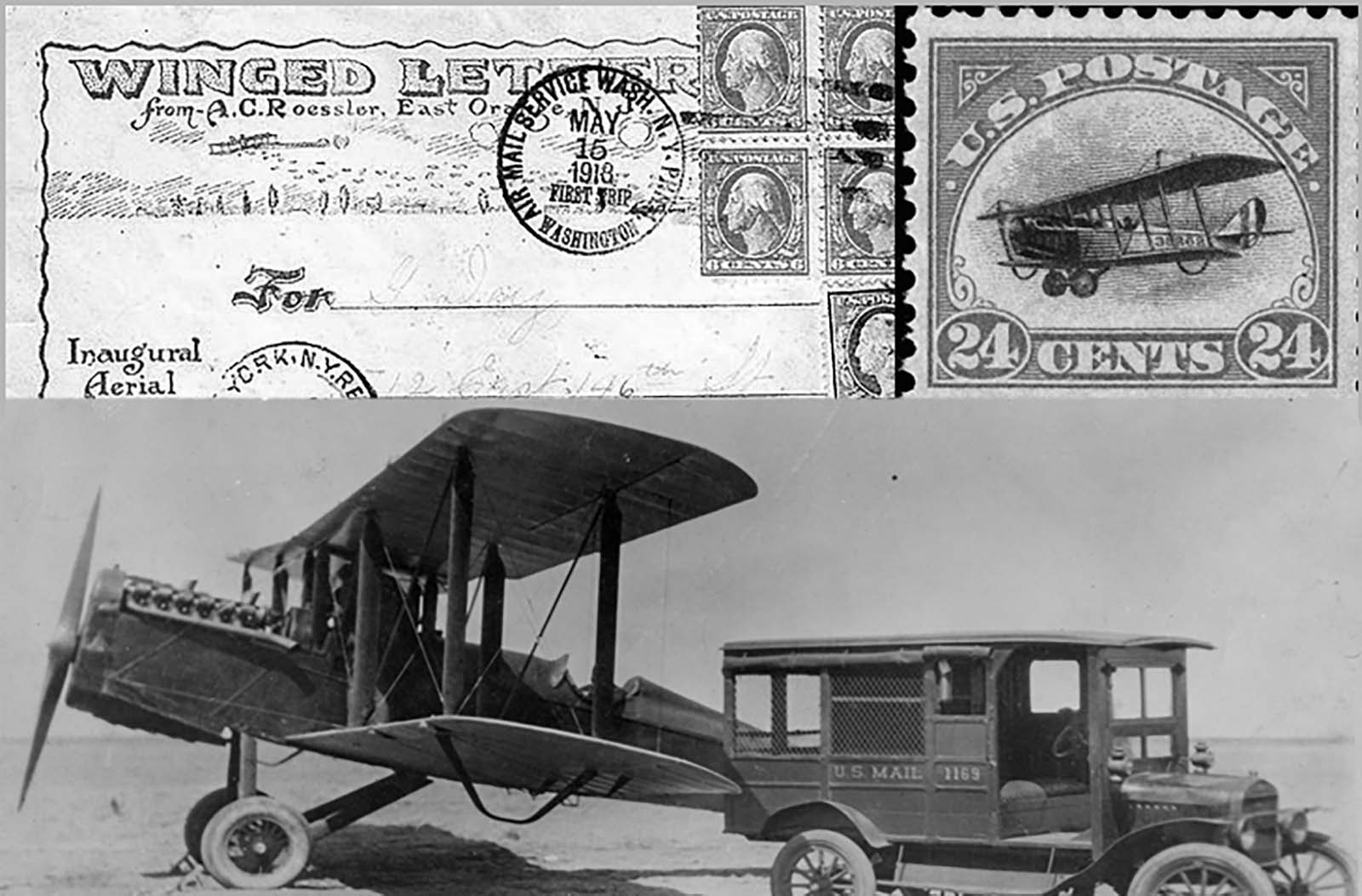Stunning Old Photos from the Early Days of Airmail Delivery in America, 1910s-1930s

The early days of airmail services in the United States marked an important milestone in the history of mail delivery.
With the advent of the airplane, the United States Postal Service began transporting letters and packages through the sky, revolutionizing the speed and efficiency of mail delivery.
These rare and historic photographs show the planes, pilots and support staff that made air mail services possible. F
From early biplanes to larger and more advanced aircraft used to carry mail, these images provide a fascinating look at the evolution of airmail technology.
A remarkable aspect of these old photographs is the sense of adventure and excitement that they convey. For many pilots and support staff involved in airmail services, it was a new and thrilling experience that required courage, skill and dedication.

On February 18, 1911, Fred Wiseman wrote two letters to Santa Rosa, California postmaster H.L. Trip to Petaluma, California Postmaster John Olmsted.
When the letters arrived, Fred became the pilot who carried the first airmail sanctioned by the US Postal Authority.
The first scheduled US air mail service began on May 15, 1918, using six converted United States Army Air Service Curtiss JN-4HM "Jenny" biplanes flown by Army pilots under the command of Major Reuben H. Fleet and Operated on a route between Washington. , DC (Washington Polo Grounds) and New York City (Belmont Park) with an intermediate stop in Philadelphia (Bustleton Field).

These early mail planes had no reliable instruments, radios, or other navigational aids. Pilots navigated using landmarks and dead reckoning.
Bad weather caused frequent forced landings, but accidents were rare in the early months due to the aircraft's small size, maneuverability and slow landing speed.
To improve its delivery times over long distances and entice the public to use airmail, the department's long-range plans called for a transcontinental air route from New York to San Francisco.
The first leg of this transcontinental route – from New York to Cleveland with a stop in Bellefonte, Pennsylvania, then from Cleveland to Chicago, with a stop in Bryan, Ohio – opened in 1919.
A third phase opened in 1920 from Chicago to Omaha via Iowa City, and feeder lines were established from St. Louis and Minneapolis to Chicago.
final transcontinental segment – from Omaha to San Francisco, via North Platte, Nebraska; Cheyenne, Rollins and Rock Springs in Wyoming; Salt Lake City, Utah; and Elko and Reno in Nevada - opened on September 8, 1920.

Initially, mail was carried on trains at night and flown during the day. Nevertheless, the service was 22 hours faster than the cross-country all-rail time.
In August 1920, the department began setting up radio stations at each airfield to provide pilots with current weather information.
By November, ten stations were operating, including two naval stations. When airmail traffic was permitted, other government departments used radio for special messages, and the Department of Agriculture used radio to broadcast weather forecasts and stock market reports.

Pilots flew in open cockpits in all types of weather, in planes later described as "a nervous collection of whistling wires, linen stretched over wooden ribs, all attached to a whiny, water-cooled engine". to be done.
A 1918 article titled "Practical Hints on Flying" advised pilots to "Never forget that the engine may stop, and keep this in mind at all times."
Accidents frequently occur due to unpredictable weather, unreliable equipment, and inexperience; From 1918 to 1927, 34 airmail pilots died.

The original air mail letter rate between any two points on the route was 24 cents per ounce when the service began, for which the first special-purpose U.S. mail was sent on May 13, 1918. Air Mail Stamp (C-3) was issued.
The red and blue stamp's vignette depicted the Army JN-4 #38262, the aircraft that flew the first airmail flight from Washington two days later, and which represented 24 percent of the duty, to cover postage costs. The two cents was split at 12 cents for air service and 12 cents for air service. 10 cents for special delivery.
On July 15 the rate was reduced to 16 cents for the first ounce and 6 cents for each additional ounce, and on December 15 the rate was reduced again to 6 cents per ounce when special delivery was made optional. Was.

Exclusive transportation of mail flown by government-operated aircraft ended in 1926 under the provisions of the "Kelly Act", which required USPOD to contract with commercial air carriers to fly Contract Air Mail (CAM) routes. Was. Will be established by the department.
During the first half of 1934, the US Army Air Forces temporarily took over the routes - with disastrous results - when an air mail scandal led to the summarily cancellation of all CAM contracts by President Franklin D. Roosevelt I went.
Domestic air mail became obsolete as a separate additional fee service in 1975, and international air mail in 1995, when the USPS began transporting all first class long distance intercity mail by air on a regular basis.

No comments: